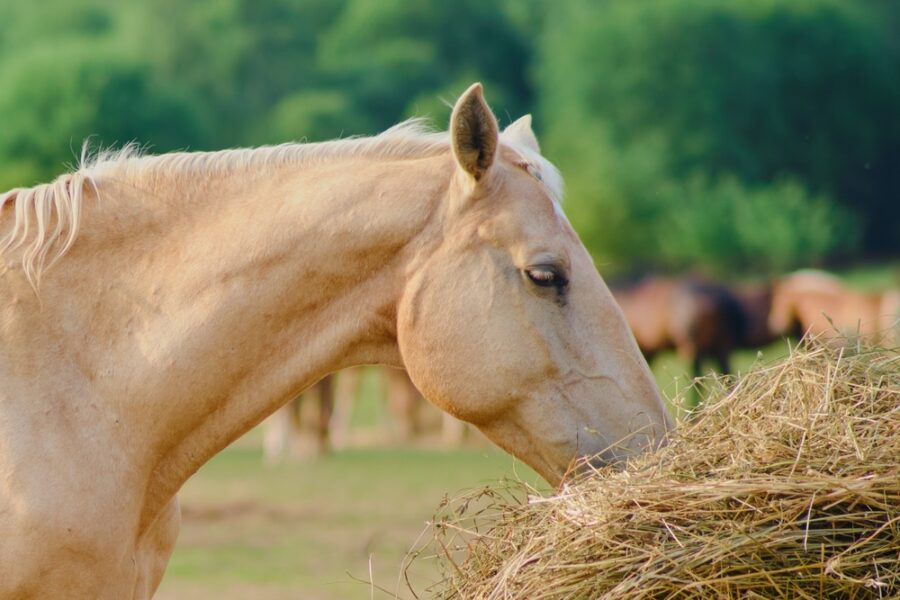Finding the right feeding strategy that aligns with natural behaviors while addressing health concerns will improve equine management.
Finding the right balance between free-choice forage and controlled feeding can be a challenge in equine management. A recent study explores the effects of different feeding methodsfree choice hay, automatic box feeders (BF), and slow feeders (SF)on the well-being, behavior, and weight management of polo horses.
Study Design
Conducted as a 3 × 3 Latin square design, the study involved 15 polo horses divided into three groups, each undergoing a 15-day treatment cycle with one of the feeding methods. Continuous behavioral sampling (CBS) and cortisol circadian rhythm (CCR) analysis provided a comprehensive understanding of the horses’ reactions to each feeding strategy.
Feeding Methods
- Free Choice Hay (FC): Horses had unrestricted access to hay, promoting free-choice foraging. However, this led to increased hay consumption, wastage, and higher weight gain.
- Automatic Box Feeders (BF): This method controlled the hay intake, limiting wastage and overall consumption. Horses using BF exhibited different behavioral patterns compared to the other groups.
- Slow Feeders (SF): Similar to BF, SF aimed to regulate hay consumption and minimize waste. Horses in this group displayed specific behaviors associated with controlled feeding.
Behavioral Insights
Horses under FC and SF spent more than 50% of their time-budget foraging, creating a behavioral pattern reminiscent of natural grazing. In contrast, BF horses spent less time eating, leading to increased engagement in standing, ground sniffing, and coprophagy.
Notably, BF horses exhibited higher levels of aggression. To address this issue, the researchers recommend that when horses are provided with a restricted amount of food, it is crucial to guarantee sufficient space for each horse to partake in eating without experiencing crowding.
Weight Management
The study highlighted significant differences in weight gain among the groups. FC horses recorded the highest weight gain, while BF and SF horses exhibited lower weight gains, emphasizing the importance of controlled feeding methods in managing equine body weightas obesity might lead to diseases.
Implications for Equine Well-Being
The findings suggest that both BF and SF are effective in controlling hay intake and preventing excessive weight gain. Horses in these groups displayed balanced behaviors associated with controlled foraging. However, FC, while providing free-choice forage, resulted in higher weight gain and increased hay wastage, making it less suitable for overweight horses.
This study provides valuable insights into the impacts of different feeding methods on behavior, weight management, and overall equine well-being. By understanding these dynamics, feeding strategies can be tailored to optimize health, happiness, and longevity for equines.







